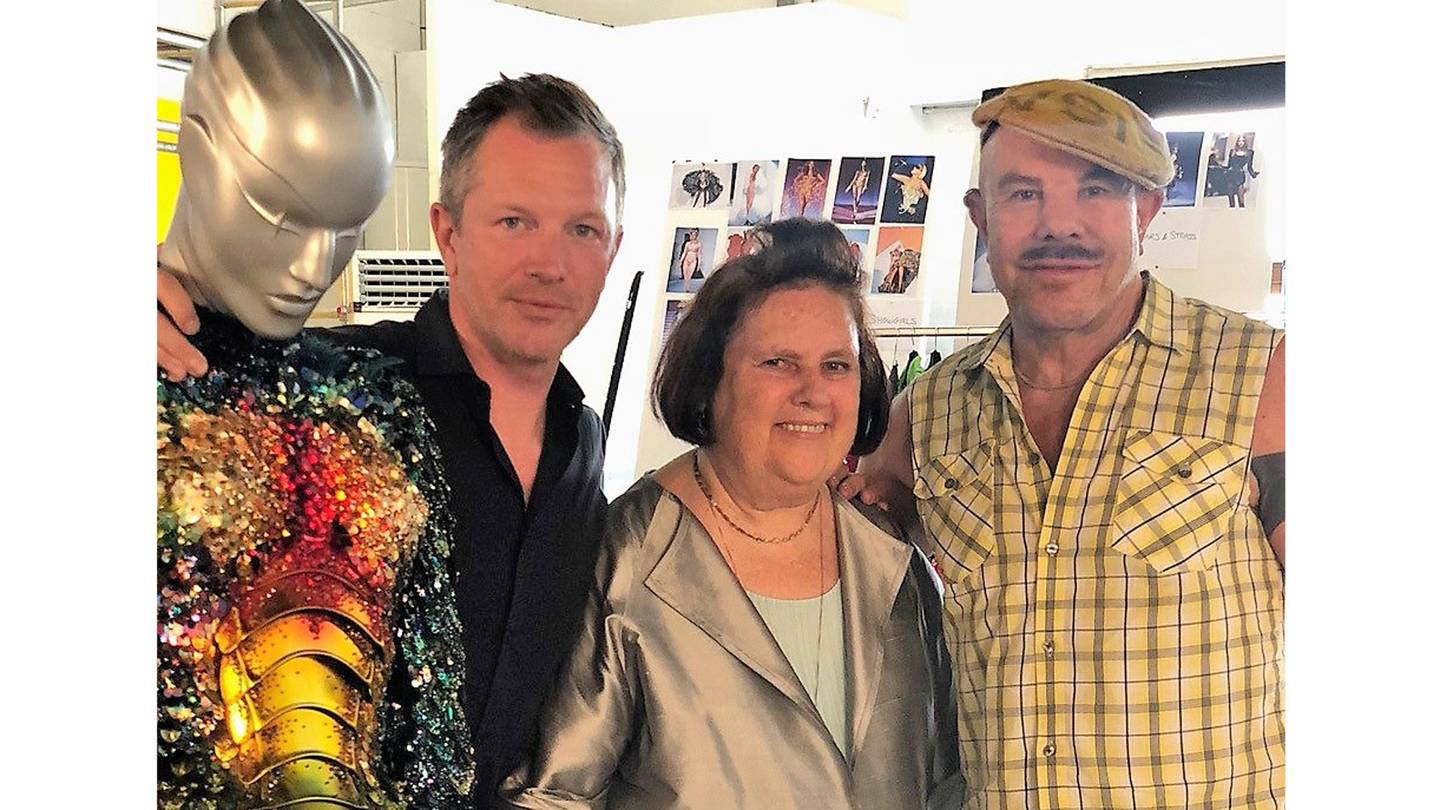
(@SUZYMENKESVOGUE)
For the first time in a decade, the designer talks to Suzy about his passion for nature, famous clients from Beyoncé to Ivana Trump, and his upcoming exhibition.
Thierry Mugler – or “Manfred” as the reclusive designer now calls himself – walks me along a row of his extraordinary creations.
“This is the famous green jacket that David Bowie wore; that’s a suit for Ivana Trump – she was one of my best clients; and this is the scarification effect for Iman, in the same colour as her skin,” Mugler says, explaining the story behind each and every outfit.
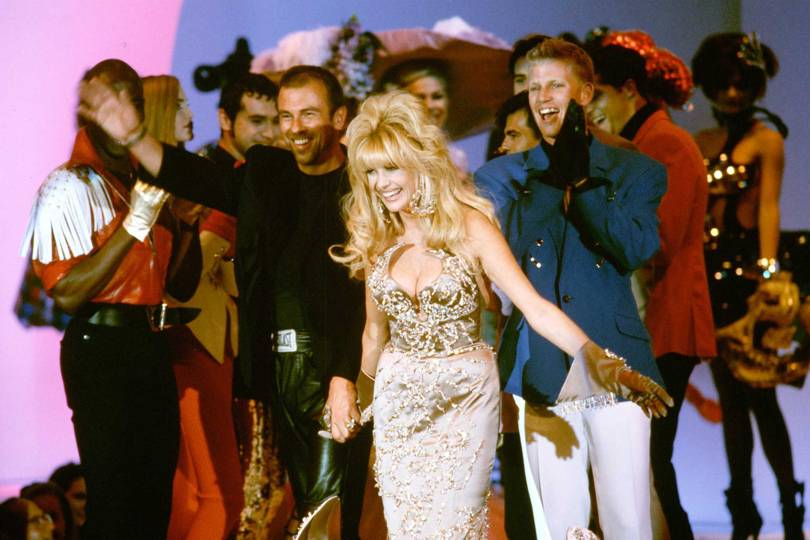
( RINDOFF PETROFF / GETTY IMAGES)
Nearly two decades after he swapped fashion for show business and rebuilt his body to alter his appearance dramatically, the first presentation of his fantastical creations is being prepared for a museum show in Montreal: “Thierry Mugler: Beyond Couture”.
The designer, who reached his supreme fashion position in the Eighties, always tilted towards performance clothes, with an enticing list of artists following his sharp, body-conscious cuts, his exceptional materials, and extraordinary accessories.
We look together at a naked figure laid out in sculpted silver garments, as if inside a coffin.
“She’s our goddess,” the designer announces, showing me other people in metallic pieces, from an openwork Victorian crinoline to a Nefertiti figure in a silvered robe.
Together with us in this anonymous storage area on the outskirts of Paris is Thierry-Maxime Loriot, Exhibition Curator at the Montreal Museum of Fine Arts (MMFA).
In 2011, Loriot launched the blockbuster exhibition of Jean Paul Gaultier that subsequently spent four years spinning across the world to 12 cities from Dallas, to Melbourne – “The Fashion World of Jean Paul Gaultier: From the Sidewalk to the Catwalk”.
Thierry is excited about his new project, which is destined to open in Montreal on the 2nd of March 2019, where it will be on show for six months before travelling to Europe and more countries around the globe (to be announced soon).
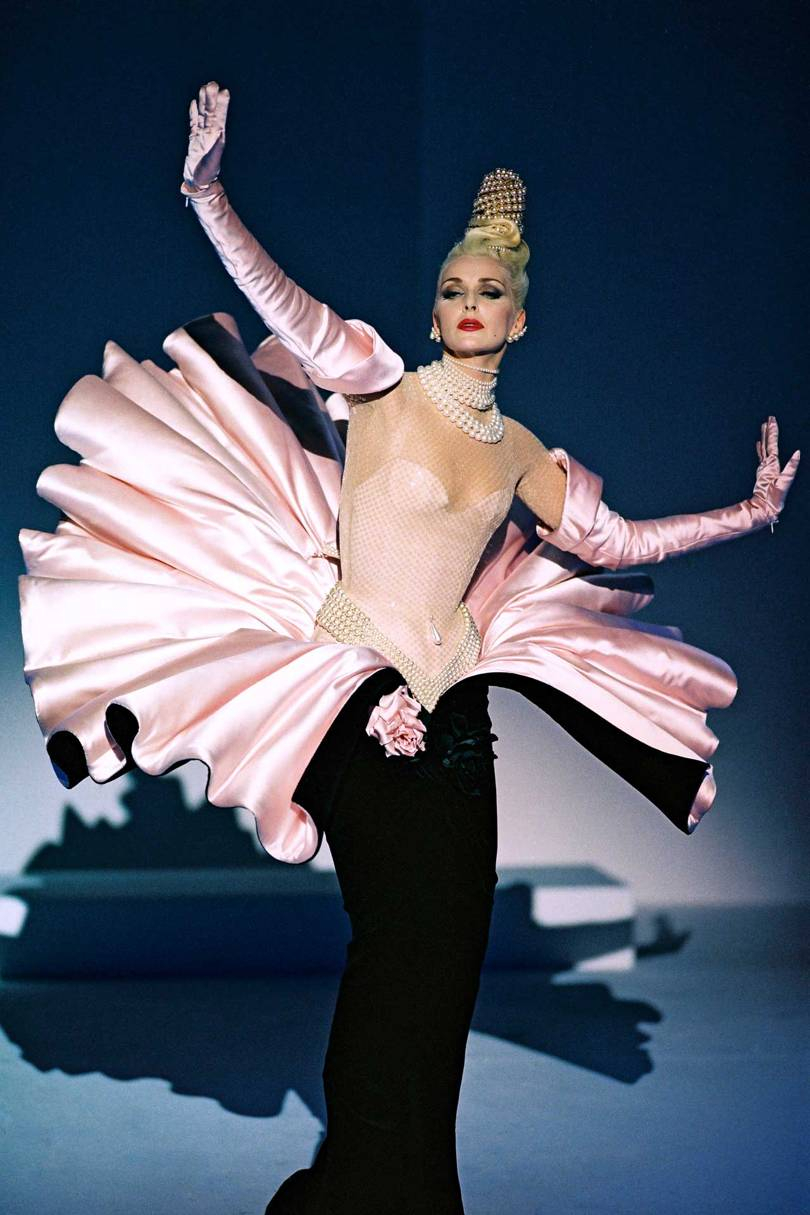
“Fashion now is only sweatpants and Instagram,” the curator says, explaining how the 150 pieces are being chosen not only to show wonders of imagination and technique, but also to celebrate the exuberant energy of a pre-digital designer whose exceptional work looks fresh and relevant to today.
Manfred’s manager, Jean-Baptiste Rougeot, reveals that 9,000 pieces ["10,000 if you include accessories," says Thierry-Maxime] are “in secret places in Provence”.
“Everything has been stored and the company is very proud of that, because many other designers’ original pieces do not exist any more,” says the man who believes that the Mugler spirit has remained alive in the stage clothes that Manfred has created for Beyoncé and in the uber-successful fragrances for American beauty giant IFF (International Flavors and Fragrances).
As he holds up the different objects, Mugler laughs a lot. Although his face has changed almost beyond recognition and his body has beefed up several sizes, he has the same energy and enthusiasm as in the Eighties. I vividly remember his shows from that time, sitting in a theatre watching model Pat Cleveland on stage, rising upwards to the heavens; or when I crouched on the floor absorbing an extraordinary display of insects translated into clothes.
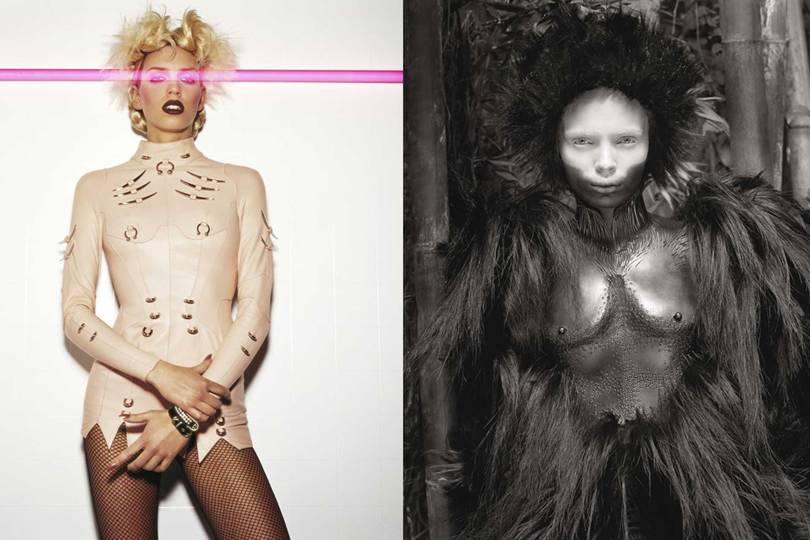
(LEFT: INEZ AND VINOODH. RIGHT: © HERB RITTS / TRUNK ARCHIVE)
“Staging was important for me, but also the most important thing is to be inspired – by fish, insects, or symbolic animals like a boar,” says the designer, who will turn 70 this December.
“Then there are objects like a motorcycle or a car,” he continues. “The idea is to find the human in there and to transform all these inspirations, but also to simplify the femininity.”
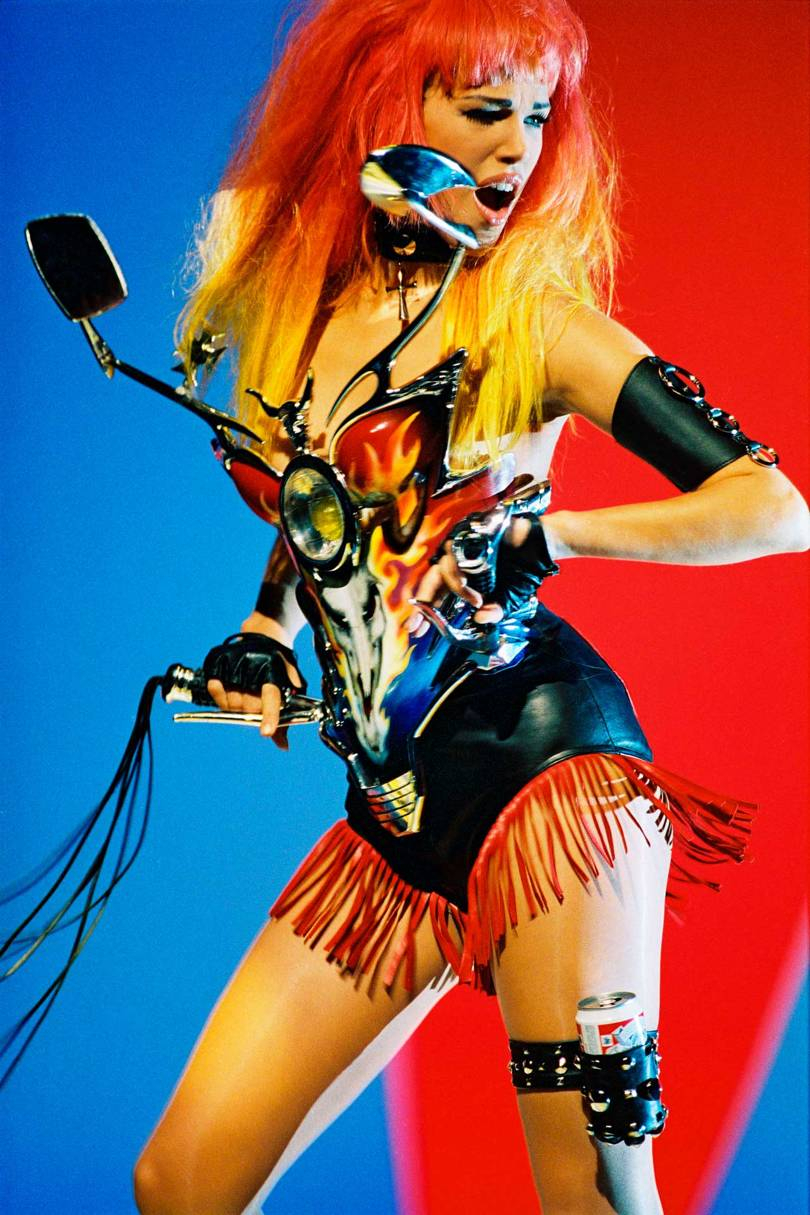
(© PATRICE STABLE / THIERRY MUGLER)
Looking at the Mugler creations – the upside-down triangle silhouette of the Eighties’ suit; pleated gold lamé decoration; an animal-shaped bodice made of hair; “fur” fabricated from layers of feathers; paillettes that might have been scarabs, with their eerie translucent colours – the wonder is how relevant these clothes still seem to contemporary eyes.
The heart of the work is in the cut – so precise and certain, whether on a curving sweep of a neckline, a pleated jacket draped to the body, or the line of those rigid metallic bodices somehow melted into a curvy corset.
“And here is my way of paying homage to an Italian icon: lace,” Mugler says. “It’s all in rubber and moulded – there was no 3D-printing then.”
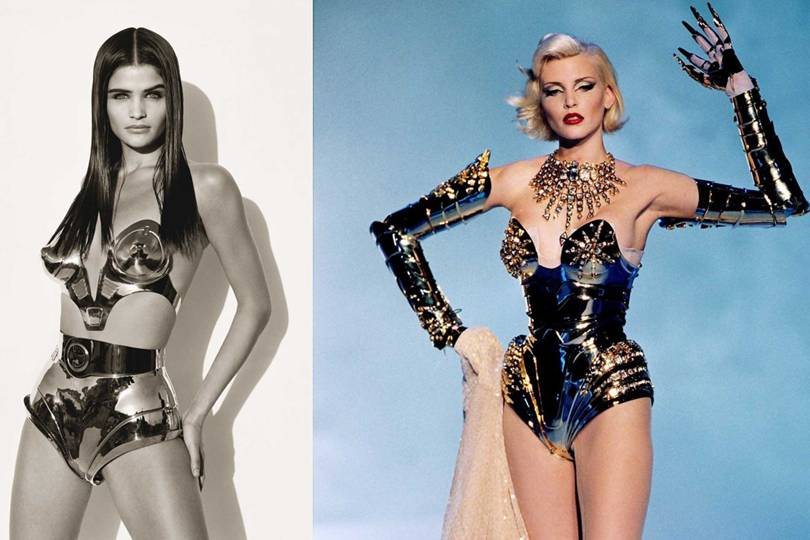
(LEFT: © HERB RITTS / TRUNK ARCHIVE. RIGHT: © PATRICE STABLE / THIERRY MUGLER)
Thierry-Maxime will have to convince the museum audiences of today that clothes that seem so modern were designed before the digital era and before the days when a mighty waterfall of earrings would have got in the way of a smartphone.
Now enjoying phenomenal success at the Kunsthal Museum in Rotterdam with an exhibition devoted to 25 years of Viktor & Rolf, the French-Canadian curator is an inspired choice to bring Mugler on stage in a museum show.
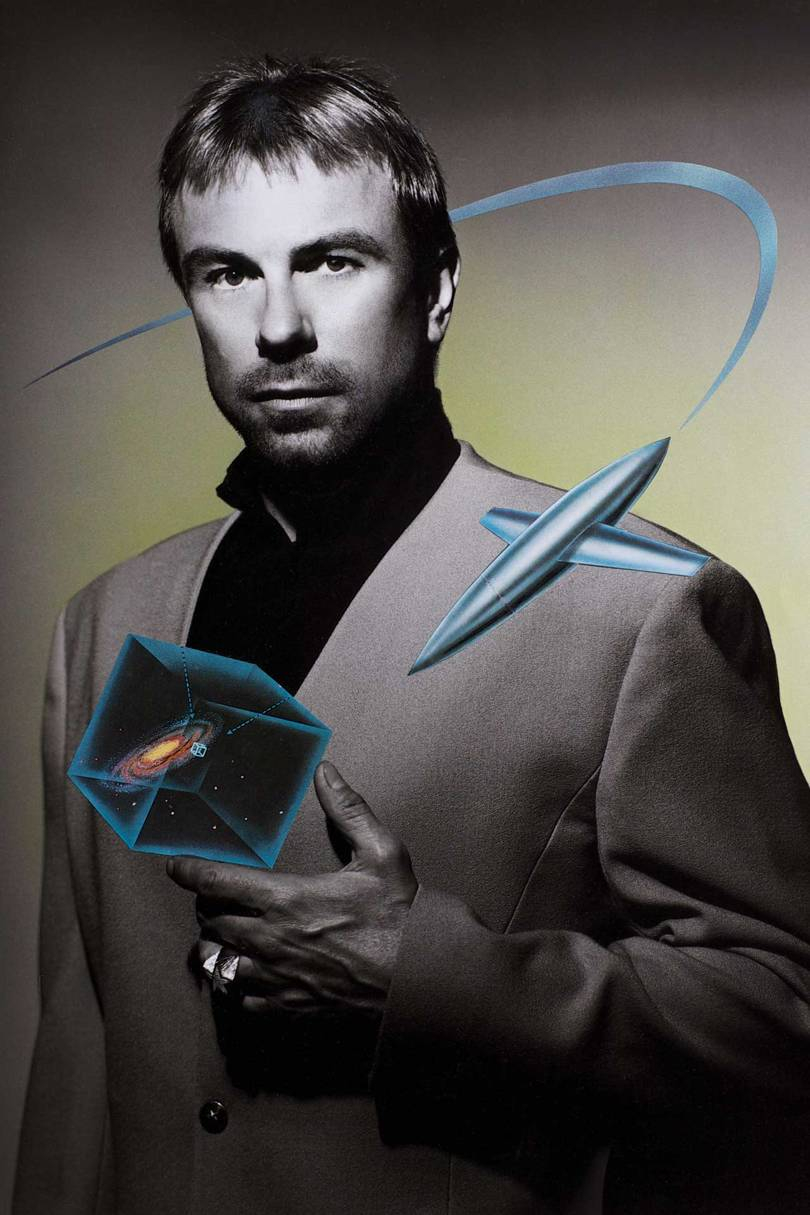
(INDÜSTRIA / BRAD BRANSON AND FRITZ KOK)
Mugler’s manager, Rougeot, has kept the designer in touch with the fashion world through the unstoppable success of the IFF fragrances, starting with Angel and on to Alien and Aura.
It feels as though the clothes were designed yesterday as Mugler shows me pages of his drawings, all with an angular elegance. “Shoes of the impossible” is his description of sculpted footwear, looking like predecessors to Alexander McQueen’s fantastical shoes a quarter-century later.
“People recognise my influence on the cut, because since the Seventies I did all of this,” says Mugler, holding up a sharply tailored red suit. “But I am not sure they realise the extent of the influence I had.”
The designer was indeed ahead of his time, with his feathered extravaganzas and a belief in nature that made him create a pair of couture gloves from porcupine needles that were actually, as he describes them, “made especially fake, in plastic – my fantasy of reinventing animal skin because I never did fur. I don’t kill animals.”
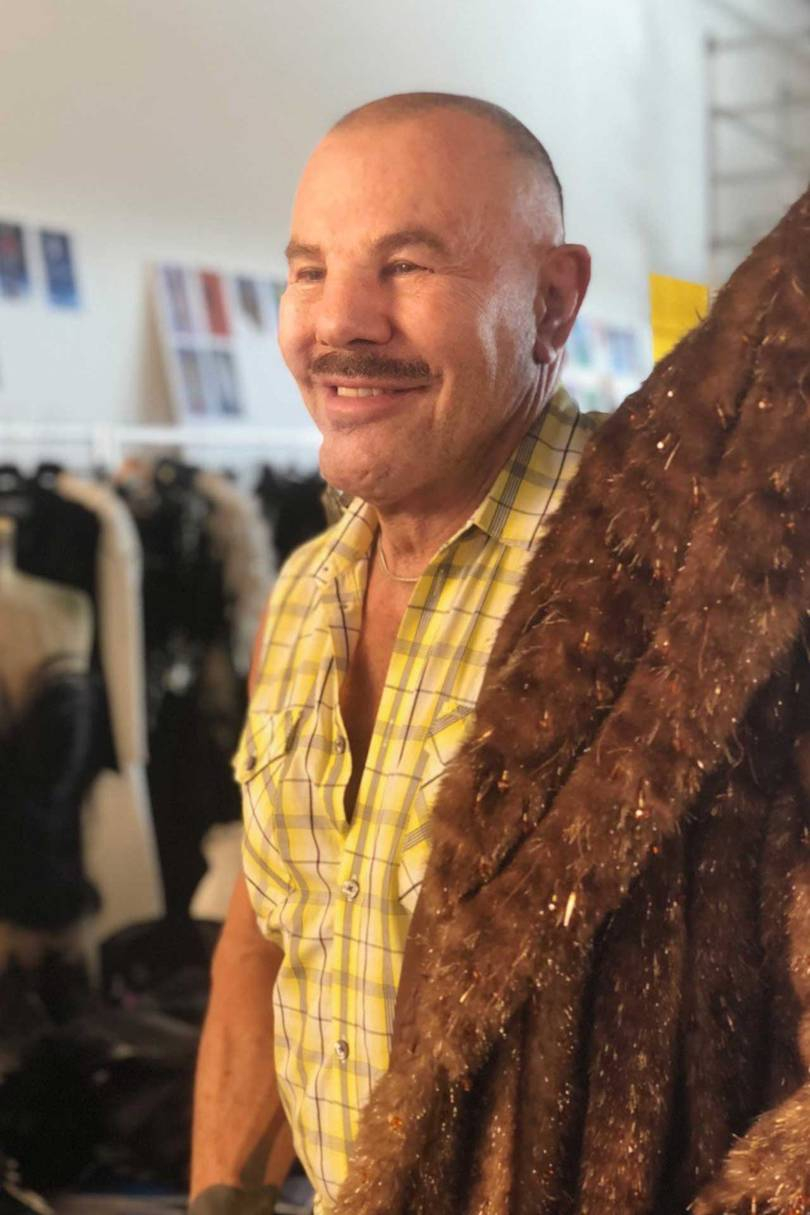
(THIERRY-MAXIME LORIOT)
Mugler says his stand against destroying nature goes back to 1972, when he “wanted to get as close as possible to the beauty of real mink” by using “layers and layers of chiffon, embroidered with pieces of gold”.
The designer remembers another “fur” creation – ”traditional haute couture dresses made of horse hair that Jerry Hall wore with her daughter Lizzy Jagger on stage”.
“And then there is this from the ‘Atlantes’ collection in 1989,” he continues. “Fish gills on the front of the dress. The tailoring of this fabric is really great – like a statue – it stays on your body but stands up gracefully the way we want.”
Having studied all the existing pieces, Thierry-Maxime says, “It was a revolution at the time to make things like this” and shows me an evening swimming suit from 1986.

(© JEAN-PAUL GOUDE)
Who is Thierry Mugler? He was born “Manfred Mugler” in Strasbourg, on the German edge of France, trained as a classical dancer from age 9, and became part of the ballet corps at 14. His first collection was in 1973, showcasing his angular power-dressing in blocks of solid colour or glitter decoration, sparkling through to the Eighties. His bold styling brought him to dress Demi Moore in 1993’s Indecent Proposal and to work with George Michael on the video for “Too Funky”, although that ended in a bust-up.
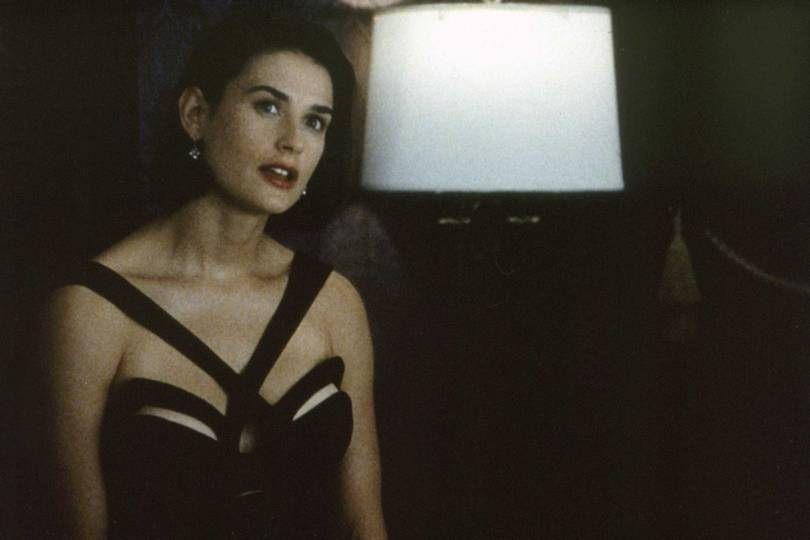
(PARAMOUNT PICTURES/PHOTOFEST)
He built a regular clientele, including Ivana Trump – “who was ordering one suit in 12 colours” – yet IFF pulled the plug on money-draining couture and then his entire fashion business in the new millennium. His brand was later revived with various contemporary designers. For Mugler, it was, in fact, a relief to stop turning out 10 collections a year made by 11 floors of workers.
This madness was replaced by continuing support from the Clarins beauty group and a new role for Mugler, who moved to New York in 2002 and concentrated on costume design, some for risky cabaret.
Thierry-Maxime hopes to bring together the wide-ranging creativity of Mugler’s life and career into the exhibition.
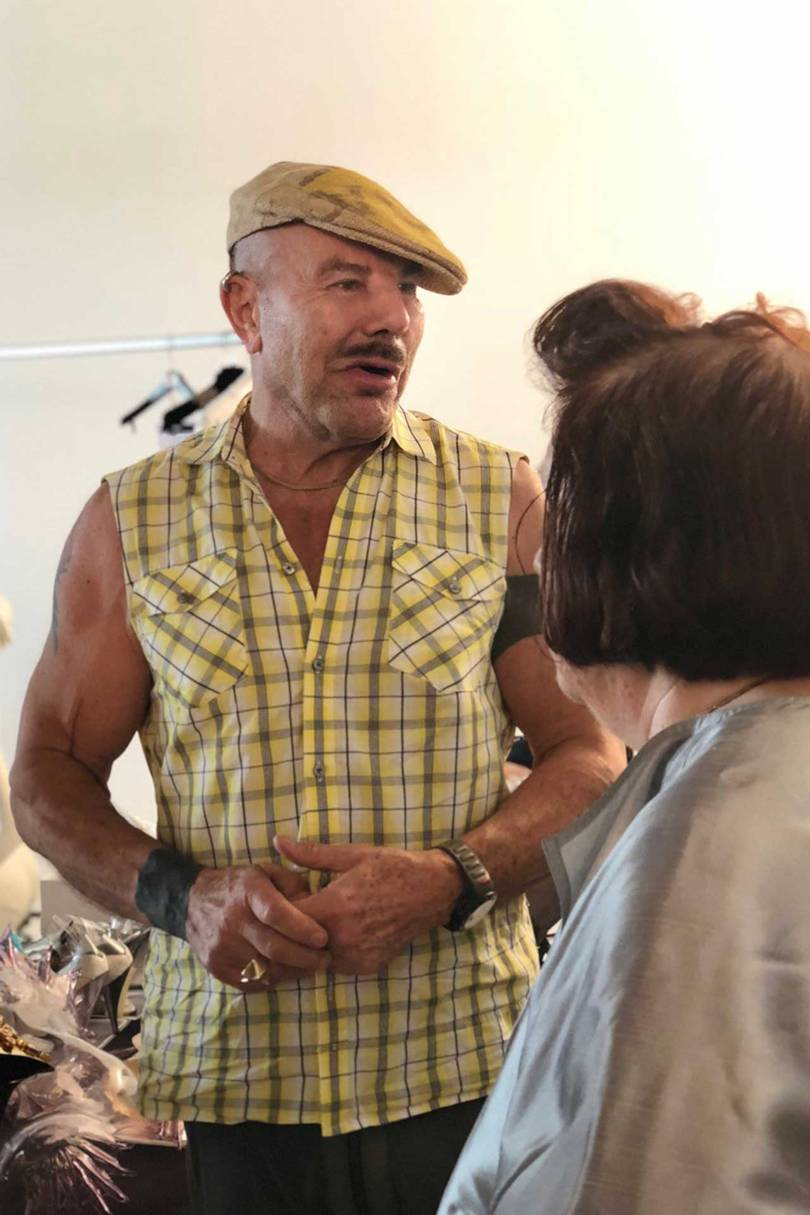
“I always work with a living artist or designer, and the whole presentation is about his vision,” the curator says. “It’s about how he has translated his passions and his obsessions through clothing, ever since age 14 when he joined the Opéra national du Rhin as a ballet dancer. He toured with the company for six years as a professional dancer.”
I remember so clearly a conversation with Thierry Mugler in the Nineties, when he told me that his first fragrance, Angel, with its faceted bottle of an exploding star, came directly from his personal turmoil as a young gay man, too guilty to go to the cathedral in Strasbourg, and instead lying on a bench outside, looking up at the stars that would become a symbol of his lifelong work.
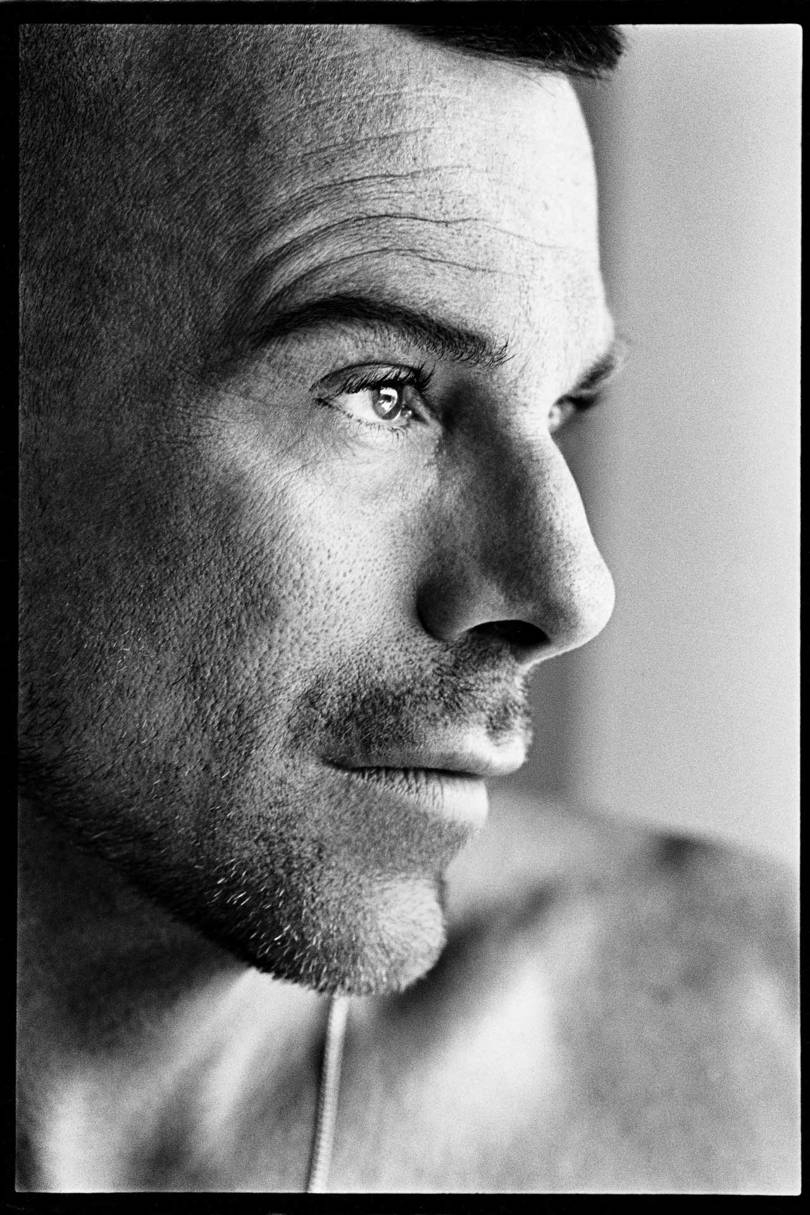
“I know what being alone is – really deeply,” he says now. “I had a difficult childhood and I was very alone for years and years. I was watching the stars because for me this was a new reality. There was something there, new, different more beautiful.
“When I started dancing, it was an opener; it was an incredible, fantastic help because it was a magical stage. The theatre was made for me. But after the beauty of the light, the red curtain and applause – everyone had someone to wait for them backstage, but me? Never. I had years and years when I was alone.”
Turning that sorrow into luminous, imaginative, original clothing was a personal triumph. And how richly Manfred Thierry Mugler deserves to be recognised and applauded as a unique and important player on the fashion stage.
“Thierry Mugler: Beyond Couture” opens at the MMFA on the 2nd of March 2019


Zaloguj się, aby zostawić komentarz.